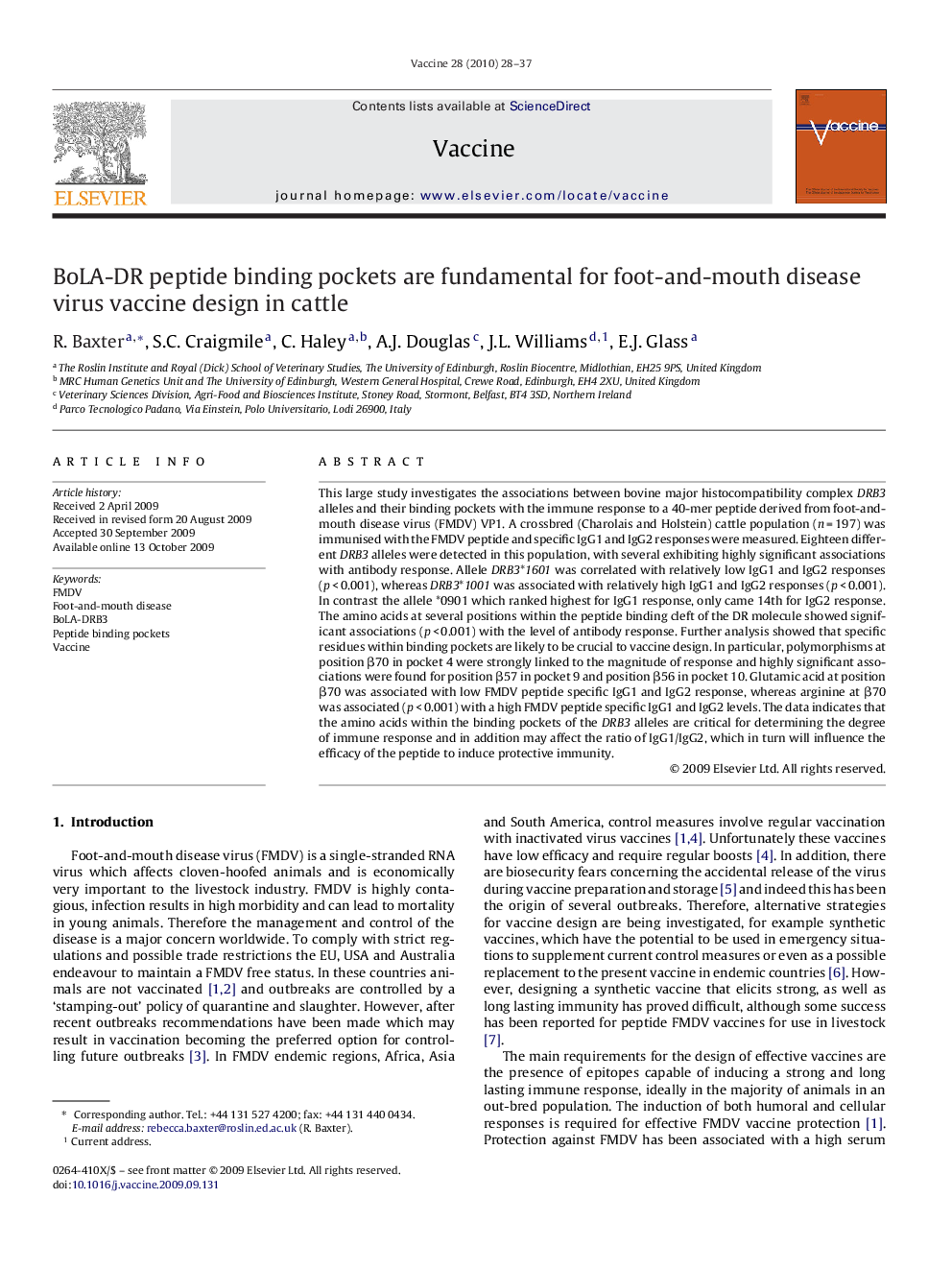| کد مقاله | کد نشریه | سال انتشار | مقاله انگلیسی | نسخه تمام متن |
|---|---|---|---|---|
| 2404218 | 1102961 | 2009 | 10 صفحه PDF | دانلود رایگان |

This large study investigates the associations between bovine major histocompatibility complex DRB3 alleles and their binding pockets with the immune response to a 40-mer peptide derived from foot-and-mouth disease virus (FMDV) VP1. A crossbred (Charolais and Holstein) cattle population (n = 197) was immunised with the FMDV peptide and specific IgG1 and IgG2 responses were measured. Eighteen different DRB3 alleles were detected in this population, with several exhibiting highly significant associations with antibody response. Allele DRB3*1601 was correlated with relatively low IgG1 and IgG2 responses (p < 0.001), whereas DRB3*1001 was associated with relatively high IgG1 and IgG2 responses (p < 0.001). In contrast the allele *0901 which ranked highest for IgG1 response, only came 14th for IgG2 response. The amino acids at several positions within the peptide binding cleft of the DR molecule showed significant associations (p < 0.001) with the level of antibody response. Further analysis showed that specific residues within binding pockets are likely to be crucial to vaccine design. In particular, polymorphisms at position β70 in pocket 4 were strongly linked to the magnitude of response and highly significant associations were found for position β57 in pocket 9 and position β56 in pocket 10. Glutamic acid at position β70 was associated with low FMDV peptide specific IgG1 and IgG2 response, whereas arginine at β70 was associated (p < 0.001) with a high FMDV peptide specific IgG1 and IgG2 levels. The data indicates that the amino acids within the binding pockets of the DRB3 alleles are critical for determining the degree of immune response and in addition may affect the ratio of IgG1/IgG2, which in turn will influence the efficacy of the peptide to induce protective immunity.
Journal: Vaccine - Volume 28, Issue 1, 10 December 2009, Pages 28–37